Italy 2012, continued
This is all you see from the outside, and of course, no photographs are allowed on the inside (all my photos are from the web). But I’d done my homework, creating a slideshow of the images and titles of each, and had been reviewing them for a few weeks before we left. I’d first heard about Scrovegni Chapel when I was taking Art History at my local community college some twenty-plus years ago. The woman who taught it did not hold a degree in art, but she was well traveled, loved art and museums and was really knowledgeable. She told us all that whatever we did in life, we should not miss seeing Giotto’s frescoes in Scrovegni Chapel. So the seed was planted. We’d tried a couple of other times, on trips to Italy to get here, but either we couldn’t warp the itinerary around it, or else it was closed for renovation. All the stars aligned for this trip.
We walked around the side to see a small glass room with an airlock door. The procedure was that you would enter with a group, sit and watch a video while you acclimated to the chapel’s temperature and humidity levels, then they’d let you out the other side into the chapel. The door would airlock shut, then the outside door would open–for just three minutes–then it would begin again.. We could see the video going on, and the chairs were half-empty: not a crush of tourists today. We stood there, wondering if they’d let us in early, when a whole tour group walked up behind us. The tour guide spoke English to these tourists (Americans?) and asked us if we were on her tour. We explained we were there early. The group in the chairs got up and filed into the chapel. The airlock door opened. I got a crazy idea. (Best not to consult with Dave on these things.)
I leaned over to the tour guide. “Maybe you could ask the guard, that since there is room in your group for us and since our time isn’t until the next opening, that maybe we could stay for two visits?” She scowled. “They won’t allow it.” “But could you please ask?” I said. A miracle occurred. She asked. The first Scrovegni guide/guard said he’d have to check with the second guide/guard. We sat down with the group, wondering if we would be able to stay twice, as they have a strict fifteen-minutes-and-you’re-out policy.
We went in with the group after our acclimatising video had finished, pausing to look enquiringly at the second guide/guard, listening to the few spoken words in Italian. He gave the briefest nod, as if to say, Yes. You may have two times. Dave and I squeezed each other’s hand and filed in.
Scrovegni Chapel is not large, but it is tall, and an average person’s eyes would be about even with the first row of frescoes. There are three rows of frescoes detailing the life of Christ, plus some history of his parents. We tried to verify that particular history–it’s not in the scriptures–but a touching story nonetheless. And at either end are more frescoes, and in between are small paintings of the Allegories and Vices.
The English-speaking tour guide was giving it her go, loudly coughing (along with the rest of the group; they sounded like they belonged in an infirmary) and loudly narrated the cycle of frescoes. Dave and I went quietly to the other end, located the beginning and I narrated for him what I had learned. The older Joaquim took the virgin Anna for his bride, and unfortunately they remained childless. Joaquim fled to the wilderness in grief, feeling like it was his age that contributed , and takes refuge with shepherds, falls asleep.
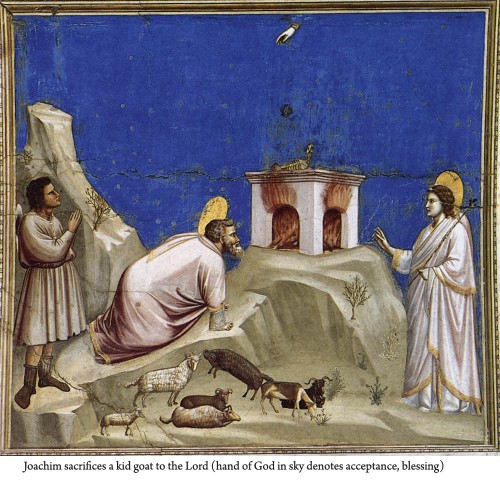 He has a dream where an angel visits him, and when he awakes, makes an offering to God. I love the detail of the hand up in the sky, blessing his offering and accepting it.
He has a dream where an angel visits him, and when he awakes, makes an offering to God. I love the detail of the hand up in the sky, blessing his offering and accepting it.
 He rushes back to the city where he meets Anna and they exchange a kiss–all is forgiven, as she is pregnant with Mary–having been visited by an angel announcing this turn of events.
He rushes back to the city where he meets Anna and they exchange a kiss–all is forgiven, as she is pregnant with Mary–having been visited by an angel announcing this turn of events.
Giotto was on the cusp of art that made room for the body in paintings, breaking from the tradition of stacking iconic saints up like fence posts in paintings. His colors are rich and dramatic and he makes use of diagonals to draw the eye into the important parts of the fresco. Dave and I work our way through the frescoes, working around the loud tour guide (bless her! bless her!) and her band of hacking tourists, and we work our way through Christ’s birth, his childhood, baptism. A loud chime sounds, the voices raise, and Dave and I move off to the side. The second guard comes in and says something, the tourists file out. He looks at us, nods with a hint of a smile while the next group files in. We continue with this amazing work of art. (There is a slide show of all the images after this post.)
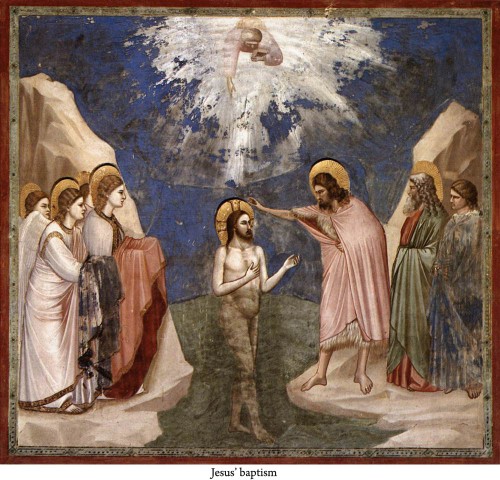 Giotto made use of transparency in this fresco, showing Christ being baptized. While the frescoes have been restored, many sections are still in disrepair.
Giotto made use of transparency in this fresco, showing Christ being baptized. While the frescoes have been restored, many sections are still in disrepair.
We continued through the Betrayal, the Crucifixion, and when we got to this image, I fell quiet.
The diagonal begins in the upper right, leading the eye to the central figure of Jesus, cradled in his mother Mary’s arms. John the Baptist, in the center, is distraught, his arms flung backward in disbelief over Christ’s death. The artist rendered the horrific reality that the crucifixion did occur, that Mary and Mary Magdalene and John and apostles were all there, perhaps wondering how this could have happened, wondering what they would do now. It is all too much to take in.
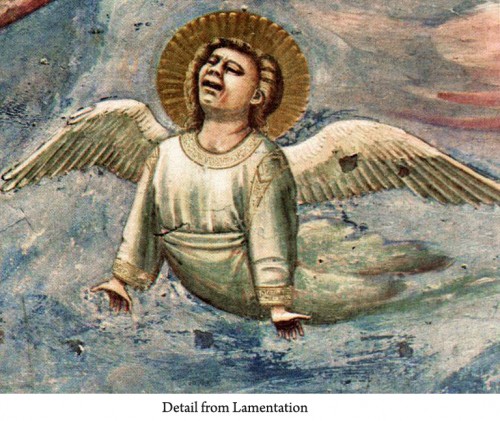 And then Giotto’s skill comes forward with this little angel, hovering over the body, profound grief on his face.
And then Giotto’s skill comes forward with this little angel, hovering over the body, profound grief on his face.
There in that little chapel in Italy, on a rainy, dark day, the story and impact of his sacrifice came full force to me, and I could not speak, nor hold back the tears. Christ was slain, all was lost, all was gone.
But the story does not end there. Christ returns, then ascends to His Father, like we all may do. Dave and I stood quietly together, the voices whispering in Italian around us, which left us to our own thoughts and emotions.
We stood for a few long moments, and we noticed the breaking of the border of the canvas denoting another place, more space. Heaven.
We moved to the The Last Judgement at one end of the chapel, noting the different figures in different places, the writing souls in Hell, the whole scene as Giotto and his workshop must have imagined it.
And then our time was up. The bell chimed. We took one last look around, then walked out into the falling rain.
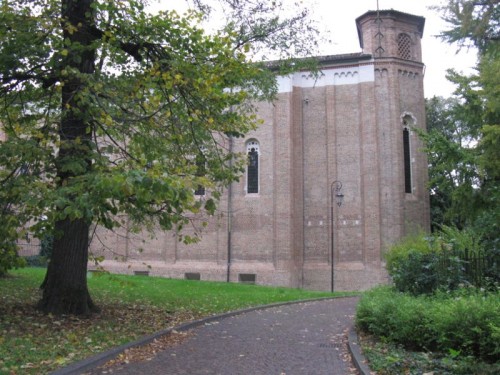
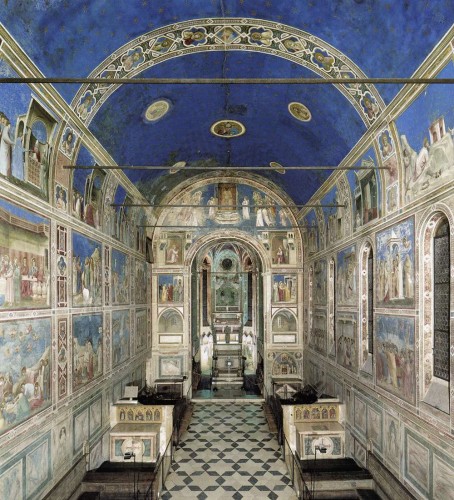
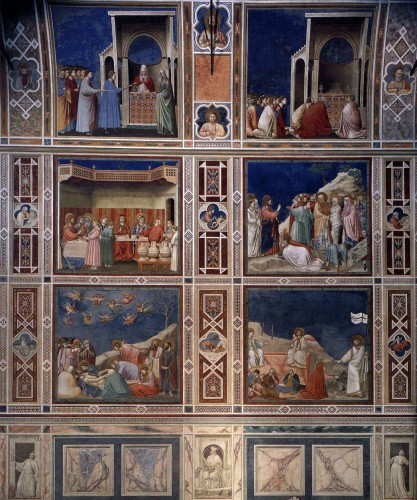
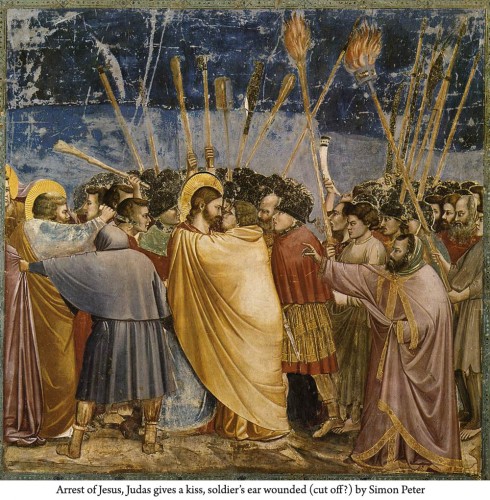
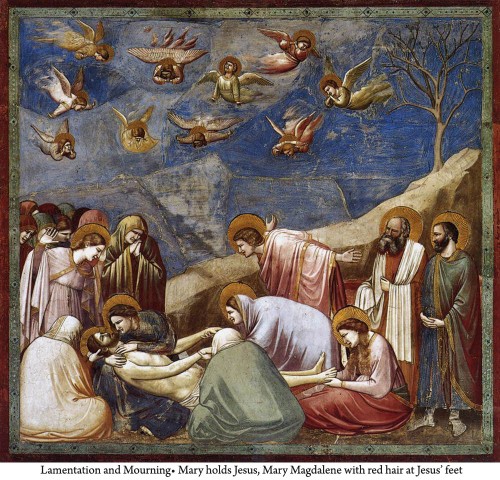
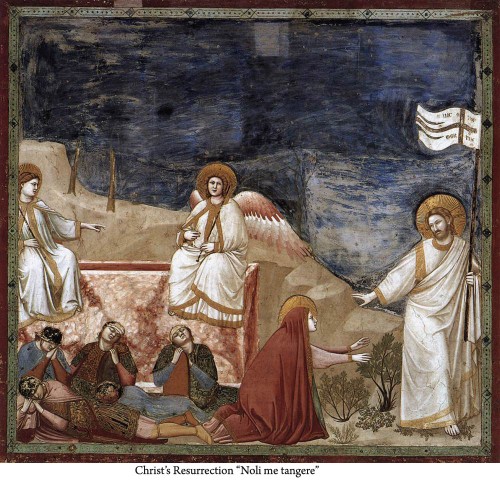
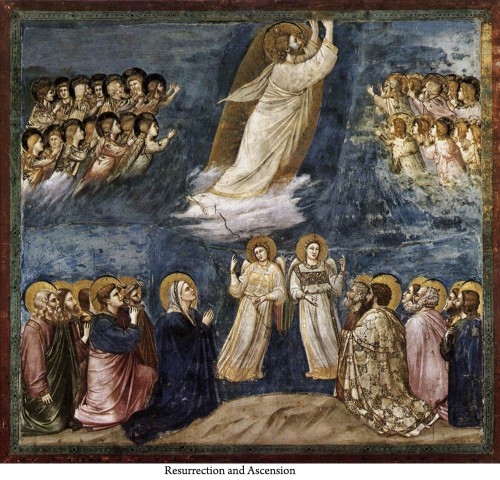
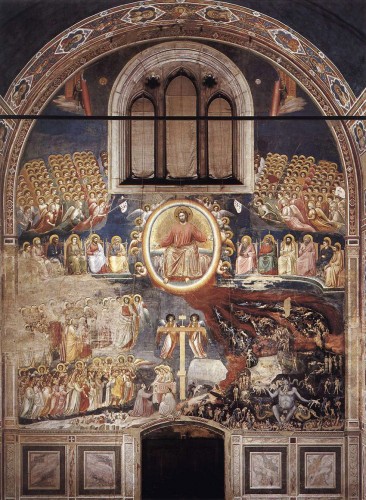
I looked at all the other pictures individually in your other post first before reading this narrative. As always, a few words can make a picture worth a thousand more than it did the first time. Well done.